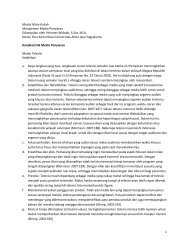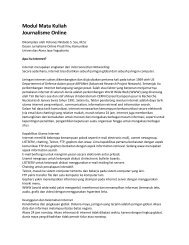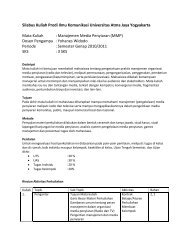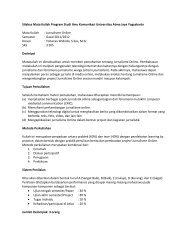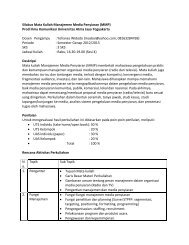Download - More from yimg.com...
Download - More from yimg.com...
Download - More from yimg.com...
Create successful ePaper yourself
Turn your PDF publications into a flip-book with our unique Google optimized e-Paper software.
TECHNOLOGY FORETOLD<br />
strengthen local <strong>com</strong>munities, and improve the flow of <strong>com</strong>munication<br />
within them (Information Technology Advisory Panel (ITAP) Report,<br />
1982). This conception of a new tier of local television stations, <strong>com</strong>parable<br />
to the local newspapers, captured the imagination of politicians,<br />
journalists and activists alike in the 1980s and 1990s. Thus, the<br />
television journalist, Richard Gregory, wrote in 1990 that ‘new cable<br />
operators have tremendous opportunities’ to create through <strong>com</strong>munity<br />
channels ‘a television equivalent of the best of the weekly newspapers’,<br />
achieving ‘a closeness with the <strong>com</strong>munity that not even local<br />
radio can match’ (Guardian, 6 August, 1990). Some like Graham Allen,<br />
Labour Opposition media minister, went further, hoping that local television<br />
would regenerate a sense of local <strong>com</strong>munity, democratize<br />
programme-making and ensure that a plurality of social experiences<br />
‘found life on the screen’ (Times, 24 May, 1995).<br />
This mixture of prediction and advocacy was repeatedly confounded.<br />
The leaden growth of cable TV in the 1980s ‘delayed’ the anticipated<br />
growth of local <strong>com</strong>munity television. It was not until the mid 1990s that<br />
ambitious local television news channels were launched in major urban<br />
centres like London, Birmingham, and Liverpool. Most of these failed<br />
disastrously, dampening hopes that new technology would give rise to a<br />
renaissance of local journalism.<br />
A different strategy was then embraced, based on the issue of shortterm,<br />
localized (RSL) licences for new local TV stations authorized by the<br />
1996 Broadcasting Act. This gave rise to renewed expectations that<br />
grassroots television journalism was about to take off (even though it<br />
was actually employing ‘old’ technology). For example, the Sunday Times<br />
(27 September, 1998) reported lyrically that ‘a quiet revolution is taking<br />
place in British television’, based on the plans of ‘50 new local <strong>com</strong>panies’<br />
to launch new local <strong>com</strong>munity channels. The same, arresting image was<br />
invoked by the Independent (14 February, 1998) when it reported that ‘in<br />
a backroom in Oxford this week a small revolution was under way…’.<br />
The Oxford Channel, was being launched with 30 professional staff,<br />
numerous local volunteers and an appealing schedule of local programmes.<br />
According to its joint managing director, the new channel aimed<br />
to ‘get the <strong>com</strong>munity involved in programming’.<br />
As it turned out, most of these newly licensed local channels did not<br />
have a viable economic model to sustain them. They gained only small<br />
audiences, and therefore limited advertising, and had no significant<br />
public funding. Fatality among local TV channels was consequently<br />
high. Out of 23 local TV channels licensed after 1996, only 13 were still<br />
in operation in early 2006 (Of<strong>com</strong>, 2006a). Many of the survivors had<br />
only a vestigial connection to the dream of grassroots, locally produced<br />
programming that had so excited sympathetic journalists. Thus,<br />
Oxford Channel’s employees were all sacked in 2000, and replaced with a<br />
23





